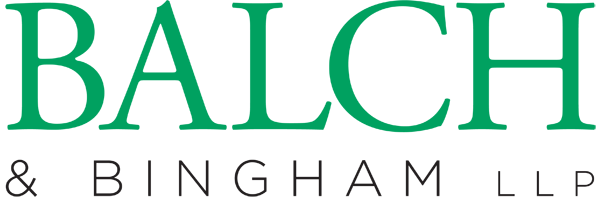On March 18, 2020, the President signed the Second Coronavirus Preparedness and Response Supplemental Appropriations Act, 2020, Pub. L. 116-127, available here. Two (C and E) of its eight Divisions impose new paid leave obligations on employers of fewer than 500 employees, with certain exclusions and exemptions. Division D offers extra federal support of state unemployment compensation programs, if states make certain changes. Division F requires all group health plans to cover COVID-19 in vitro diagnostic products and office visits without cost sharing. Division G makes new tax credits available to address the current public health emergency. This memo summarizes Divisions D, C and E and the related employer tax credits enacted in Division G.
The Emergency Unemployment Insurance Stabilization and Access Act of 2020
This Act increases federal support of state unemployment compensation programs starting 60 days after enactment, if states make required program changes. Those changes include –
- Requiring employers to provide notification of the availability of unemployment compensation to employees at the timer of separation from employment (consistent with a DOL model notice);
- Waiving work requirements;
- Waiving the waiting week;
- Non-charging employers directly impacted by COVID-19 due to an illness in the workplace or direction from a public health official to isolate or quarantine workers.
Section 4104 directs DOL to help states establish, administer and make employers aware of short-time compensation programs described in 26 U.S.C. §3306(v), “to help avert layoffs.” States with such programs use their unemployment compensation funds to replace the wage loss of employees whose weekly work hours have been reduced. Section 4105 raises from 50% to 100%, through December 31, 2020, the federal funding of shareable unemployment compensation authorized in 26 U.S.C. §3304. That includes, among other benefits, the waived waiting week and any short-time compensation program. See 26 U.S.C. §3304(a)(4)(E). States that have not enacted short-time compensation programs and states that have programs less generous than allowed by federal will need to amend their laws in order to provide these federally-funded benefits.
The Emergency Family and Medical Leave Expansion Act
Effective from April 1 through December 31, 2020, this Act covers employers of less than 500 employees and employees who have been on the payroll for at least 30 calendar days. FMLA regulations count and cover employees who are part time and those who have not worked recently because they are on leave, but do not apply to former employees or employees laid off. See 29 CFR §105(b), (c). FMLA regulations also treat separate corporations as separate employers, despite common ownership or financial control, unless they are joint employers or have a significant degree of common management, operational interrelation, and central labor relations control. See 29 CFR §825.104(c)(2). Since that “single employer” finding usually expands employer obligations, many controlled groups have taken care for decades to preserve subsidiary labor relations and operational independence, but that could have the opposite effect under this new law.
DOL has authority to issue two narrowing regulations – (a) exempting businesses with fewer than 50 employees and (b) excluding “certain health care providers and emergency responders from the definition of “eligible employee.” Whether or not DOL does that, “An employer of an employee who is a health care provider or an emergency responder may elect to exclude such employee from the application of [these amendments].”
To access this new benefit, the employee must give the employer advance notice, if the need is foreseeable and if it is practicable to give advance notice, and must be “unable to work (or telework) due to a need for leave to care for the son or daughter under 18 years of age of such employee if the school or place of care has been closed, or if the child care provider of such son or daughter is unavailable, due to a public health emergency.” Any COVID-19 related emergency declaration by any federal, state or local authority will suffice. However, “child care provider” includes only those who receive compensation for providing child care services on a regular basis.
The first ten days of this new class of FMLA leave need not be paid, unless the employer already has a paid leave benefit that covers it. After the tenth day, and up to a maximum of $200 per day and $10,000 total, the employer must pay the remaining leave time at “two-thirds of [the] employee’s [FLSA] regular rate of pay …,” counting all hours that the employee “would otherwise be normally scheduled to work ….” If the employee does not have a fixed work schedule, the employer must average the number of hours that the employee worked during the six months ended on the first day of leave. New hires’ hours are to be based on “the reasonable expectation of the employee at the time of hiring of the average number of hours per day that the employee would normally be scheduled to work.” Employers who contribute to multi-employer leave funds under their union contracts may satisfy their obligations by making those contributions, if the fund provides the required benefits.
A very small employer (fewer than 25 employees) need not restore the employee’s job following this new leave if the job has been eliminated because the public health emergency caused adverse economic changes, and if the employer made a reasonable effort to restore the employee to an equivalent position and, failing that, makes reasonable efforts to contract the employee if an equivalent position becomes available during a one-year “contact period” which begins on the earlier of (a) the date on which the qualifying public health emergency need for leave ends or (b) the date that is 12 weeks after the date on which the employee’s FMLA leave began.
The Emergency Paid Sick Leave Act
Also effective from April 1 through December 31, 2020, this Act borrows most of its definitions and its enforcement provisions (as if this violation were a minimum wage payment failure) from the Fair Labor Standards Act, 29 U.S.C. §201, et seq., but includes its own notice posting requirement (DOL model notice to be published by March 25, 2020), and prohibition of related discrimination and retaliation.
Government employers are covered regardless of size but private employers of 500 or more are not covered. To access this new benefit, the employee must be unable to work (or telework) due to a need for leave for at least one of six reasons:
(1) The employee is subject to a federal, state or local quarantine or isolation order;
(2) The employee has been advised by a health care provider to self-quarantine due to COVID-19 concerns;
(3) The employee is experiencing COVID-19 symptoms and is seeking medical diagnosis;
(4) The employee is caring for someone who is covered under reason (1) or (2);
(5) The employee is caring for a son or daughter of such employee if the school or place of care of the son or daughter has been closed, or the child care provider of such son or daughter is unavailable, due to COVID-19 precautions;
(6) The employer is experiencing any other substantially similar condition specified in rules to be written by DOL, HHS and Treasury.
Even new hires may use this leave, immediately, and employers may not require employees to use other paid, employer-provided leave first.
Full-time workers are entitled to take 80 hours of paid sick leave. Part-timers may take the average number of hours that they work over “a two week period.” As with the FMLA expansion, the pay is rate multiplied by hours during the paid leave period. The rate is the greater of the employee’s FLSA “regular rate” or the minimum wage rate (federal, state or local). The hours are those that the employee normally would have been scheduled to work during the leave period. For those on a varied schedule, the employer determines the average daily hours the employee worked during the six months before leave. For those more recently hired, the reasonable expectation of the employee at time of hire controls. Required pay is capped but the cap depends on the reason for leave. For reasons (1) – (3), the caps are $511 daily and $5,100 total. For reasons (4) – (6), the caps are $200 daily and $2,000 total, and the pay rate is just 2/3 of the regular rate. Employers that have multi-employer labor agreements may satisfy their sick leave pay obligations by making fund contributions, if the funds pay the required benefits. This Act does not require that employers allow employees to cash-in their unused sick leave pay on termination.
On March 25, DOL released images of the posters that must be displayed by covered employers. Caution: in close cases, an employer’s distribution or display of this poster may be offered as evidence that a claimed exemption is inapplicable. Employers on the bubble should consider getting legal advice before posting.
- The non-federal government employer poster may be viewed here.
- The Field Assistance Bulletin on temporary non-enforcement is here.
- Guidance regarding the posting requirement is online here.
DOL must publish sick leave pay calculation guidelines by April 2, 2020. As with the FMLA expansion law, DOL must make rules exempting small (fewer than 50 employees) employers and excluding health care provider and emergency response workers. DOL also must adopt rules that “ensure consistency between” this Act, the FMLA expansion law, and the tax credit scheme described below. Those rules will be needed to understand, for example, what Congress meant when it allowed employers to insist that employees taking this paid sick leave “follow reasonable notice procedures in order to continue receiving such paid sick time.”
When HR 6201 became law, the applicable FMLA rule (29 CFR §825.102) listed twelve types of “health care provider”:
- M.D.;
- Osteopath;
- Podiatrist;
- Dentist;
- Clinical Psychologist;
- Optometrist;
- Chiropractor;
- Nurse Practitioner;
- Nurse Midwife;
- Clinical Social Worker;
- Physician Assistant;
- Anyone else from whom the employer’s group health plan would accept a medical certification.
DOL published informal, pre-rule guidance on March 24, answering many questions that have arisen. This FAQ is especially helpful:
If I am home with my child because his or her school or place of care is closed, or child care provider is unavailable, do I get paid sick leave, expanded family and medical leave, or both—how do they interact?
You may be eligible for both types of leave, but only for a total of twelve weeks of paid leave. You may take both paid sick leave and expanded family and medical leave to care for your child whose school or place of care is closed, or child care provider is unavailable, due to COVID-19 related reasons. The Emergency Paid Sick Leave Act provides for an initial two weeks of paid leave. This period thus covers the first ten workdays of expanded family and medical leave, which are otherwise unpaid under the Emergency and Family Medical Leave Expansion Act unless the you elect to use existing vacation, personal, or medical or sick leave under your employer’s policy. After the first ten workdays have elapsed, you will receive 2/3 of your regular rate of pay for the hours you would have been scheduled to work in the subsequent ten weeks under the Emergency and Family Medical Leave Expansion Act.
Please note that you can only receive the additional ten weeks of expanded family and medical leave under the Emergency Family and Medical Leave Expansion Act for leave to care for your child whose school or place of care is closed, or child care provider is unavailable, due to COVID-19 related reasons.
Tax Credits
Employers pay Social Security taxes under Code §3111(a) and railroads pay railroad retirement contributions under Code §3221(a). Under each Act, employers need not treat the new paid leave as wages for purposes of those taxes and may take refundable credits against those taxes equal to the total amount (up to the caps) of the new benefits paid.
Under the paid sick leave law, the per-employee credit taken in any quarter is limited to “the excess (if any) of (A) 10, over (B) the aggregate number of days so taken into account for all preceding calendar quarters.” The amount of that credit is increased “by so much of the employer’s qualified health plan expenses as are properly allocable to the qualified sick leave wages for which such credit is sol allowed.” The amounts that the employer paid to provide and maintain its group health plan are “qualified health plan expenses” to the extent that they are excludable from employee gross income under Code 106(a). Treasury is to write the allocation rules. Self-employed individuals are granted a credit against self-employment taxes.
Under the FMLA expansion law, the payroll credit is taken against the same retirement taxes, but is capped at $200 daily and $10,000 total per employee or the amount of such tax owed by the employer for that quarter, whichever is less. Qualified health plan expenses increase this credit, as with the sick pay tax credit. Self-employed individuals are granted tax credits, as with sick leave wages paid. Treasury is directed to write rules needed to “minimize compliance and record-keeping burdens under this section.” As of March 24, IRS information about its COVID-19 responses appears here.
On March 20, 2020, DOL, HHS and IRS published informal guidance easing the small employer burden paid sick leave. We quote part of the guidance in full below, because it includes some very good news.
Prompt Payment for the Cost of Providing Leave
When employers pay their employees, they are required to withhold from their employees’ paychecks federal income taxes and the employees' share of Social Security and Medicare taxes. The employers then are required to deposit these federal taxes, along with their share of Social Security and Medicare taxes, with the IRS and file quarterly payroll tax returns (Form 941 series) with the IRS.
Under guidance that will be released next week, eligible employers who pay qualifying sick or child-care leave will be able to retain an amount of the payroll taxes equal to the amount of qualifying sick and child-care leave that they paid, rather than deposit them with the IRS.
The payroll taxes that are available for retention include withheld federal income taxes, the employee share of Social Security and Medicare taxes and the employer share of Social Security and Medicare taxes with respect to all employees.
If there are not sufficient payroll taxes to cover the cost of qualified sick and child care leave paid, employers will be able file a request for an accelerated payment from the IRS. The IRS expects to process these requests in two weeks or less. The details of this new, expedited procedure will be announced next week.
Examples
If an eligible employer paid $5,000 in sick leave and is otherwise required to deposit $8,000 in payroll taxes, including taxes withheld from all its employees, the employer could use up to $5,000 of the $8,000 of taxes it was going to deposit for making qualified leave payments. The employer would only be required under the law to deposit the remaining $3,000 on its next regular deposit date.
If an eligible employer paid $10,000 in sick leave and was required to deposit $8,000 in taxes, the employer could use the entire $8,000 of taxes in order to make qualified leave payments, and file a request for an accelerated credit for the remaining $2,000.
Equivalent child-care leave and sick leave credit amounts are available to self-employed individuals under similar circumstances. These credits will be claimed on their income tax return and will reduce estimated tax payments.
Small Business Exemption
Small businesses with fewer than 50 employees will be eligible for an exemption from the leave requirements relating to school closings or child care unavailability where the requirements would jeopardize the ability of the business to continue. The exemption will be available on the basis of simple and clear criteria that make it available in circumstances involving jeopardy to the viability of an employer’s business as a going concern. The Department of Labor will provide emergency guidance and rulemaking to clearly articulate this standard.
Non-Enforcement Period
Department of Labor will be issuing a temporary non-enforcement policy that provides a period of time for employers to come into compliance with the act. Under this policy, Department of Labor will not bring an enforcement action against any employer for violations of the act so long as the employer has acted reasonably and in good faith to comply with the act. The Department of Labor will instead focus on compliance assistance during the 30-day period.
For More Information
For more information about these credits and other relief, visit Coronavirus Tax Relief on IRS.gov. Information regarding the process to receive an advance payment of the credit will be posted next week.


